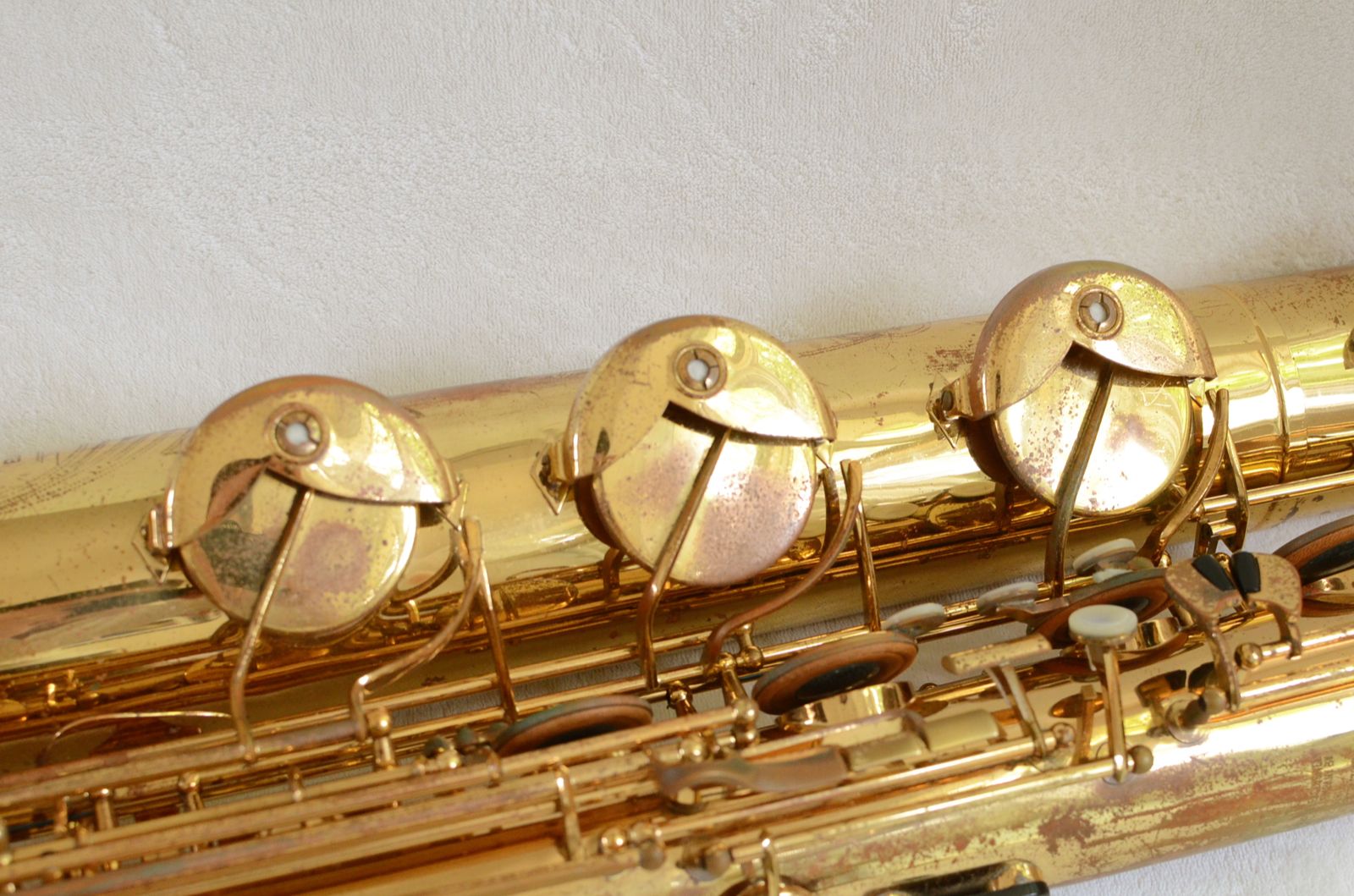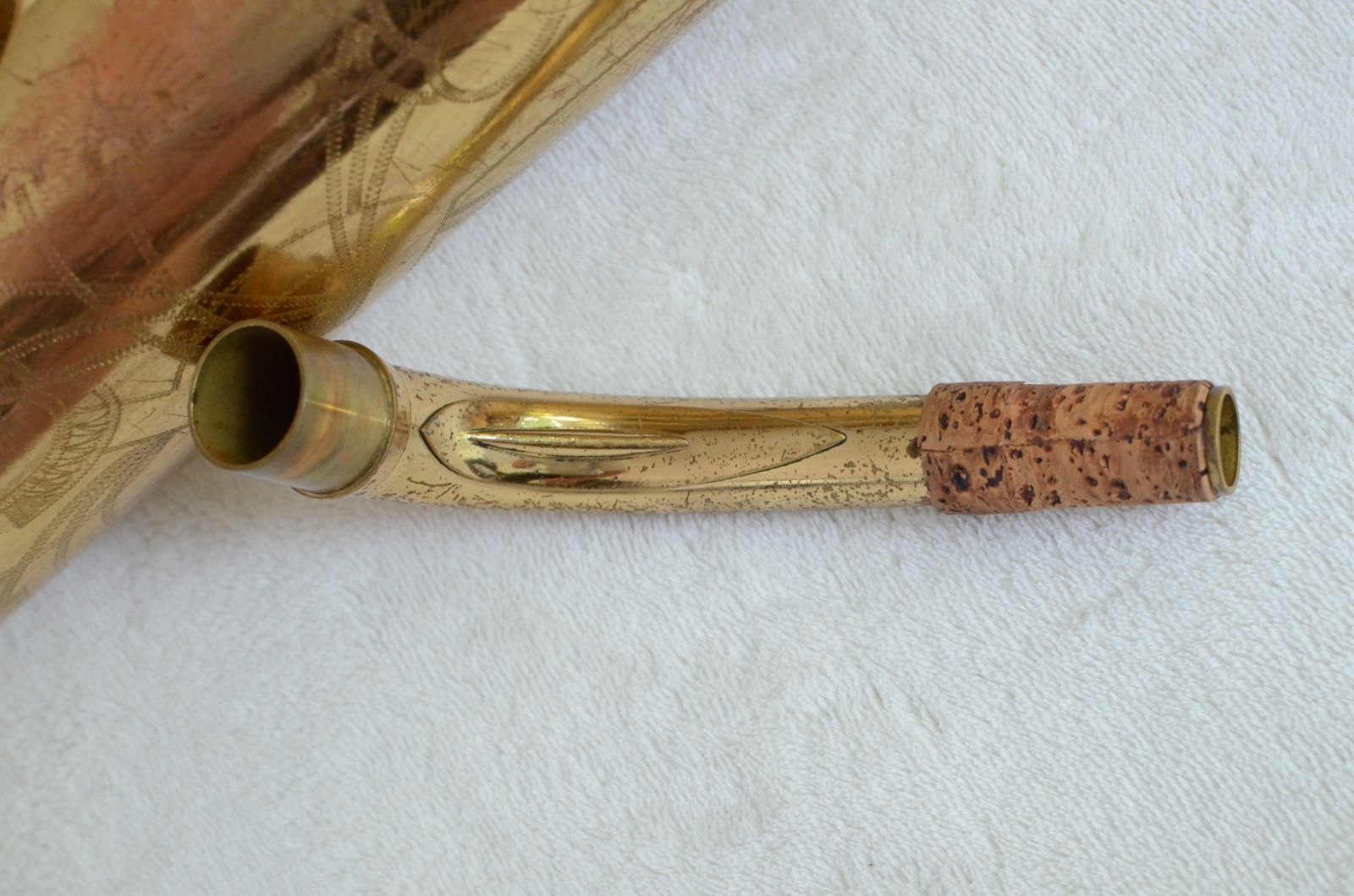

There of a couple of other acoustic improvements which are unique to our baritone. It’s simple physics, folks! You gotta do the science, and we do! The unique taper of our baritone at this point gives it much improved intonation, and a significantly more even timbre throughout the range. Because the proper nodes are more easily produced, the entire horn is more responsive and has a very large dynamic range. You must continue your calculations of the necessary taper to produce the proper nodal points onto the “pigtail”. Other manufacturers of baritone saxophones, ALL OF THEM, continue to make a classic acoustic design error: they forget that the neck of a baritone sax, which is rather small, does not correspond to the neck of an alto or tenor. Of course, copper is rather soft, but we have developed a proprietary manufacturing process which alleviates this problem.

Copper, on the other hand, resonates at frequencies which are lower, most importantly, copper resonates at a frequency range which is very similar to the human voice. The result? A thin, shrill tone, with very little bottom end. There’s a very simple explanation for this: they use FAR too much zinc in their alloy, and zinc resonates at higher frequencies, at the expense of the mids and lows. We believe that modern saxophones, and baritones in particular, have become too thin and bright sounding.

Why copper? Our research has clearly shown us that every metal has a different resonance characteristics. We’ve been working on this new model for YEARS!!! It reflects the latest results of our ongoing acoustic and metallurgical research, and in conjunction with several unique mechanism improvements, this is absolutely the most cutting edge design available in any baritone sax from any manufacturer, at any time, or at any price. Product Description COMING SOON! NOT AVAILABLE YET!!


 0 kommentar(er)
0 kommentar(er)
